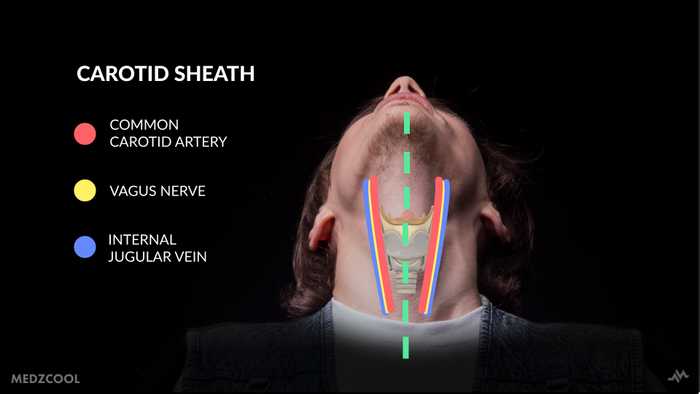NUCLEOTYPE
Emergency Cricothyroidotomy
January 11, 2020
The emergency cricothyroidotomy is a procedure that is performed to obtain an airway when the care provider cannot obtain another means of a definitive airway or if there are contraindications to orotracheal intubation
Indications and Contraindications
This is an emergency procedure, meaning you’ve attempted or considered other methods of obtaining an airway in your patient. The procuedure is often necessary in “Can’t Intubate, Can’t Oxygenate” situations.
Indications
- Can’t ventilate and Can’t oxygenate
- Major facial trauma preventing passage of endotracheal tube (ETT) via orotracheal intubation
- Airway obstruction preventing passage of ETT via orotracheal intubation
Contraindications (Relative)
There are not absolute contraindications to performing an emergency cricothyroidotomy, however there are some situations to be mindful of prompting reconsideration of the procedure. These include:
Airway trauma that prevents the passage of ETT through the cricothyroid membrane
- e.g. massive tracheal injury such as transection
Children < 10 years of age
- patient’s of this age are susceptible to laryngeal trauma It is advised you
- perform needle cricothyrotomy in this patient population
Anatomy
Your target is the cricothyroid membrane. This is where you will pass the endotracheal tube through. It is flanked by the thyroid cartilage superiorly and the cricoid cartilage inferiorly.

You should be far from some delicate structures flanking the larynx and cricothyroid membrane. This is mainly the carotid sheath which encases:
- common carotid artery
- vagus nerve
- internal jugular vein
Note how the carotid sheath lies immediately lateral to the larynx. Any horizontal incisions in this area should be careful so you don’t injure these structures. This is why in an emergency, large cuts are made vertically to first identify the cricothyroid membrane
Supplies
You will need a few things:
- Your finger
- A 5.0 endotracheal tube
- a scalpel, (preferably a No. 10)
- Gum Elastic Bougie
Optional supplies:
- cleaning solution - if this is a true emergency, there is no need to spend time cleaning or preparing the area for incision
- forceps
The Procedure
Step 1 - Palpate
- Feel for your landmarks. You can orient yourself by palpating the thyroid cartilage and laryngeal notch.
- Just below this is your cricothyroid membrane, which will have a softer consistency compared to the cartilages flanking it.
Step 2 - Cut
- With your scalpel, make a small midline incision approximately over the
cricothyroid cartilage.
- Vertical incisions can always be extended if needed.
- After each incision, use your index finger to palpate the cricothyroid membrane
- Once you’ve found the cricothyroid membrane, rotate your scalpel 90 degrees
and make a small horizontal incision into the membrane.
- Be careful not to extend the cut too far, remember the carotid sheaths lie lateral to the larynx.
Step 3 - Finger, Bougie, Endotracheal Tube
- Once you’ve made the incision through the cricothyroid membrane, place your index finger into the incision you’ve made.
- Exchange your finger in place with your gum elastic bougie, confirming you are
in the trachea by sliding the bougie against the rigid tracheal rings.
- You should feel the gum elastic bougie “clunk” against the tracheal rings - confirming you are in the airway/trachea.
- Feed your endotracheal tube over the gum elastic bougie, only enough to fit the cuff of the endotracheal tube passed the incision into the airway
- Inflate and secure the endotracheal tube.

